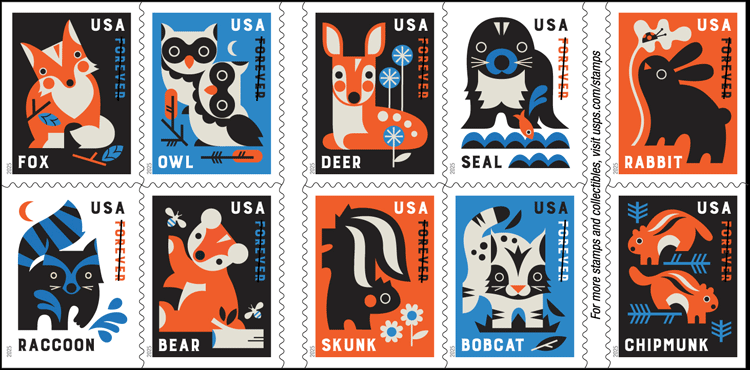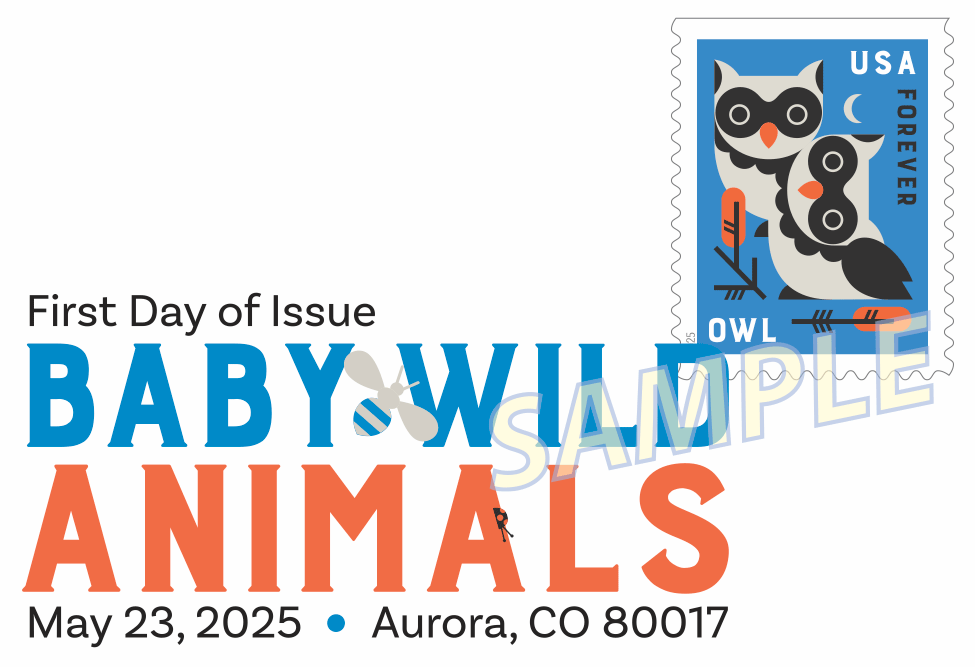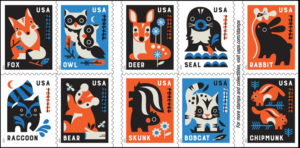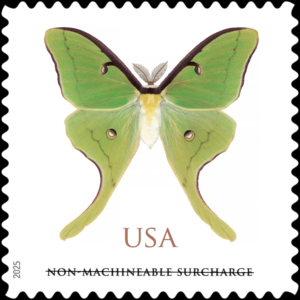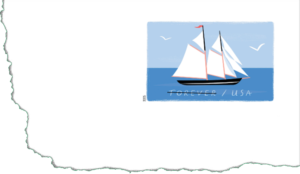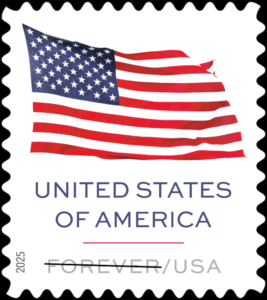 From the USPS press release November 15, 2024:
From the USPS press release November 15, 2024:
Conveniently available in many formats, this stamp continues a long tradition of honoring the Stars and Stripes. Antonio Alcalá, an art director for USPS, designed the stamp with a photograph by Doug Haight.
The latest information on this issue will appear below the line, with the latest information at the top.
Updated March 6th:
This stamp will be issued June 7 in Three Oaks, MI. According to the village’s website, “the community hosts the World’s largest Flag Day Parade each year since 1951.”
Updated May 2nd:
Here are the first-day postmarks for this issue: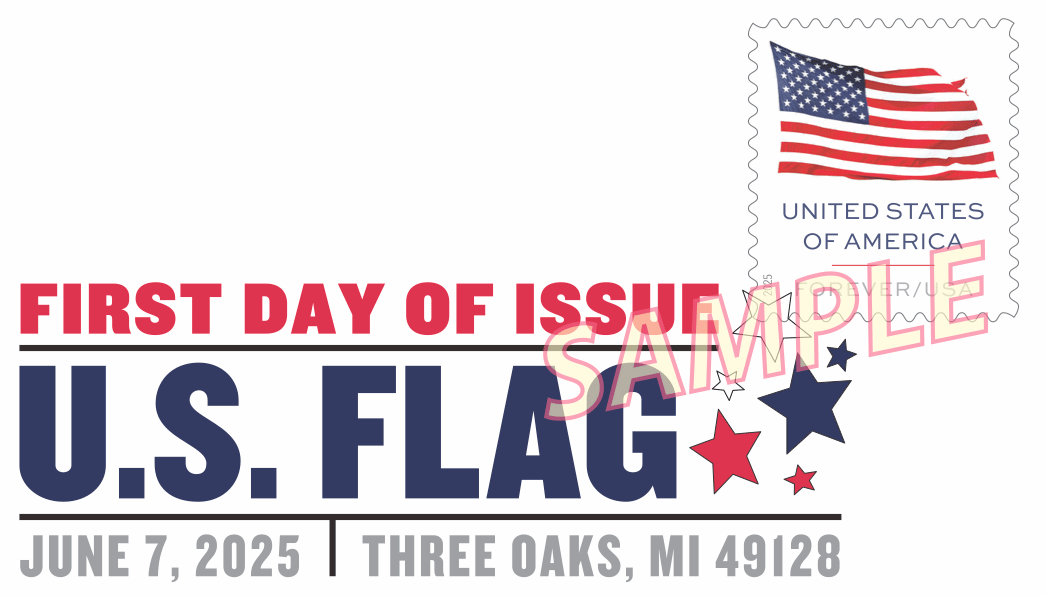 The Digital Color Postmark measures 2.79″ x 1.0″
The Digital Color Postmark measures 2.79″ x 1.0″  There is no pictorial postmark for this issue, just the FDOI “killer bar.”
There is no pictorial postmark for this issue, just the FDOI “killer bar.”
From the Postal Bulletin:
On June 7, 2025, in Three Oaks, MI, the United States Postal Service® will issue the U.S. Flag stamp (Forever® priced at the First-Class Mail® rate) in one design, in a pressure- sensitive adhesive (PSA) pane of 20 stamps (Item 124200), a PSA double-sided booklet of 20 stamps (Item 685400), a PSA coil of 100 stamps (Item 741000), a PSA coil of 3,000 stamps (Item 752100), and a PSA coil of 10,000 stamps (Item 762800). This stamp will go on sale nationwide June 7, 2025, and must not be sold or canceled before the first-day-of-issue.
sensitive adhesive (PSA) pane of 20 stamps (Item 124200), a PSA double-sided booklet of 20 stamps (Item 685400), a PSA coil of 100 stamps (Item 741000), a PSA coil of 3,000 stamps (Item 752100), and a PSA coil of 10,000 stamps (Item 762800). This stamp will go on sale nationwide June 7, 2025, and must not be sold or canceled before the first-day-of-issue.
With this new stamp, the U.S. Postal Service continues its long tradition of celebrating the U.S. flag. The stamp features an image of Old Glory, fluttered by a breeze, against a bright white background. Art director Antonio Alcalá designed the stamp using a photograph by Doug Haight.
No automatic distribution of any of the five varieties.
How to Order the First-Day-of-Issue Postmark:
Customers have 120 days to obtain the first-day-of-issue postmark by mail. They may purchase new stamps at their local Post Office™ or at The Postal Store® website at usps.com/shop. They must affix the stamps to envelopes of their choice, address the envelopes (to themselves or others), and place them in a larger envelope addressed to:
FDOI – U.S. Flag Stamp
SPS Stamp Fulfillment Services
8300 NE Underground Drive, Suite 300
Kansas City, MO 64144-9900
After applying the first-day-of-issue postmark, the Postal Service™ will return the envelopes through the mail. There is no charge for the postmark up to a quantity of 50. There is a 5-cent charge for each additional postmark over 50. All orders must be postmarked by October 7, 2025.
Technical Specifications (pane of 20):
Issue: U.S. Flag Stamp
Item Number: 124200
Denomination & Type of Issue: First-Class Mail Forever
Format: Pane of 20 (1 design)
Series: N/A
Issue Date & City: June 7, 2025, Three Oaks, MI 49128
Art Director: Antonio Alcalá, Alexandria, VA
Designer: Antonio Alcalá, Alexandria, VA
Existing Photo: Doug Haight, Evanston, IL
Modeler: Joseph Sheeran
Manufacturing Process: Offset, Microprint
Printer: Ashton Potter (USA) Ltd. (APU)
Press Type: Muller A76
Stamps per Pane: 20
Print Quantity: 50,000,000
Paper Type: Nonphosphored Type III, Block Tagged
Adhesive Type: Pressure-sensitive
Processed at: Ashton Potter (USA) Ltd. (APU)
Stamp Orientation: Vertical
Image Area (w x h): 0.7300 x 0.8400 in. / 18.5420 x 21.3360 mm.
Stamp Size (w x h): 0.8700 x 0.9800 in. / 22.0980 x 24.8920 mm.
Pane Size (w x h): 5.3500 x 4.9300 in. / 135.8900 x
125.2220 mm.
Colors: Cyan, Magenta, Yellow, Black
Plate Size: 400 stamps per revolution
Plate Number: “P” followed by four (4) single digits
Marginal Markings:
Front: Plate number in four corners
Back: © 2024 USPS • USPS logo • 2 barcodes (124200) • Plate position diagram (10) • Promotional text
Technical Specifications (double-sided booklet APU):
Issue: U.S. Flag Stamp
Item Number: 685400
Denomination & Type of Issue: First-Class Mail Forever
Format: Double-Sided Booklet of 20 (1 design)
Series: N/A
Issue Date & City: June 7, 2025, Three Oaks, MI 49128
Art Director: Antonio Alcalá, Alexandria, VA
Designer: Antonio Alcalá, Alexandria, VA
Existing Photo: Doug Haight, Evanston, IL
Modeler: Joseph Sheeran
Manufacturing Process: Offset, Microprint
Printer: Ashton Potter (USA) Ltd. (APU)
Press Type: Muller A76
Stamps per Booklet: 20
Print Quantity: 750,000,000 stamps
Paper Type: Nonphosphored Type III, Block Tagged
Adhesive Type: Pressure-sensitive
Processed at: Ashton Potter (USA) Ltd. (APU)
Stamp Orientation: Vertical
Image Area (w x h): 0.7300 x 0.8400 in. / 18.5420 x 21.3360 mm.
Stamp Size (w x h): 0.8700 x 0.9800 in. / 22.0980 x 24.8920 mm.
Full Booklet Size (w x h): 5.5200 x 1.9600 in. / 140.2080 x 49.7840 mm.
Colors: Cyan, Magenta, Yellow, Black
Plate Size: 1040 stamps per revolution
Plate Number: “P” followed by four (4) single digits
Marginal Markings: Header: “U.S. FLAG,” 20 First-Class Forever Stamps • © 2024 USPS in peel strip area • Barcode • USPS logo • Promotional text • Plate number in peel strip area
Technical Specifications (double-sided booklet BCA):
Issue: U.S. Flag Stamp
Item Number: 685400
Denomination & Type of Issue: First-Class Mail Forever
Format: Double-Sided Booklet of 20 (1 design)
Series: N/A
Issue Date & City: June 7, 2025, Three Oaks, MI 49128
Art Director: Antonio Alcalá, Alexandria, VA
Designer: Antonio Alcalá, Alexandria, VA
Existing Photo: Doug Haight, Evanston, IL
Modeler: Sandra Lane / Michelle Finn
Manufacturing Process: Offset, Microprint
Printer: Banknote Corporation of America
Press Type: Alprinta 74
Stamps per Booklet: 20
Print Quantity: 750,000,000 stamps
Paper Type: Phosphor Tagged, Block
Adhesive Type: Pressure-sensitive
Processed at: Banknote Corporation of America
Stamp Orientation: Vertical
Image Area (w x h): 0.7300 x 0.8400 in. / 18.5420 x 21.3360 mm.
Stamp Size (w x h): 0.8700 x 0.9800 in. / 22.0980 x 24.8920 mm.
Full Booklet Size (w x h): 5.5200 x 1.9600 in. / 140.2080 x 49.7840 mm.
Colors: PMS 199C, Cyan, Magenta, Yellow, Black
Plate Size: 960 stamps per revolution
Plate Number: “B” followed by five (5) single digits
Marginal Markings: Header: “U.S. FLAG,” 20 First-Class Forever Stamps • © 2024 USPS in peel strip area • Barcode • USPS logo • Promotional text • Plate number in peel strip area
Technical Specifications (Coil of 100 APU):
Issue: U.S. Flag Stamp
Item Number: 741000
Denomination & Type of Issue: First-Class Mail Forever
Format: Coil of 100 (1 design)
Series: N/A
Issue Date & City: June 7, 2025, Three Oaks, MI 49128
Art Director: Antonio Alcalá, Alexandria, VA
Designer: Antonio Alcalá, Alexandria, VA
Existing Photo: Doug Haight, Evanston, IL
Modeler: Joseph Sheeran
Manufacturing Process: Offset, Microprint
Printer: Ashton Potter (USA) Ltd. (APU)
Press Type: Muller A76
Stamps per Coil: 100
Print Quantity: 900,000,000 stamps
Paper Type: Nonphosphored Type III, Block Tagged
Adhesive Type: Pressure-sensitive
Processed at: Ashton Potter (USA) Ltd. (APU)
Colors: Cyan, Magenta, Yellow, Black
Stamp Orientation: Vertical
Image Area (w x h): 0.7300 x 0.8400 in. / 18.5420 x 21.3360 mm.
Stamp Size (w x h): 0.8710 x 0.9800 in. / 22.1230 x 24.8920 mm.
Plate Size: 744 stamps per revolution
Plate Number: “P” followed by four (4) single digits
Coil Number Frequency: Plate number every 31st stamp below stamp image
Technical Specifications (Coil of 100 BCA):
Issue: U.S. Flag Stamp
Item Number: 741000
Denomination &
Type of Issue: First-Class Mail Forever
Format: Coil of 100 (1 design)
Series: N/A
Issue Date & City: June 7, 2025, Three Oaks, MI 49128
Art Director: Antonio Alcalá, Alexandria, VA
Designer: Antonio Alcalá, Alexandria, VA
Existing Photo: Doug Haight, Evanston, IL
Modeler: Sandra Lane / Michelle Finn
Manufacturing Process: Offset, Microprint
Printer: Banknote Corporation of America
Press Type: Alprinta 74
Stamps per Coil: 100
Print Quantity: 900,000,000 stamps
Paper Type: Phosphor Tagged, Overall
Adhesive Type: Pressure-sensitive
Processed at: Banknote Corporation of America
Colors: Cyan, Magenta, Yellow, Black, PMS 199C
Stamp Orientation: Vertical
Image Area (w x h): 0.7300 x 0.8400 in. / 18.5420 x 21.3360 mm.
Stamp Size (w x h): 0.8700 x 0.9800 in. / 22.0980 x
24.8920 mm.
Plate Size: 744 stamps per revolution
Plate Number: “B” followed by five (5) single digits
Coil Number Frequency: Plate number every 31st stamp below stamp image
Technical Specifications (Coil of 10,000 APU):
Issue: U.S. Flag Stamp
Item Number: 762800
Denomination &Type of Issue: First-Class Mail Forever
Format: Coil of 10,000 (1 design)
Series: N/A
Issue Date & City: June 7, 2025, Three Oaks, MI 49128
Art Director: Antonio Alcalá, Alexandria, VA
Designer: Antonio Alcalá, Alexandria, VA
Existing Photo: Doug Haight, Evanston, IL
Modeler: Joseph Sheeran
Manufacturing Process: Offset, Microprint
Printer: Ashton Potter (USA) Ltd. (APU)
Press Type: Muller A76
Stamps per Coil: 10,000
Print Quantity: 125,000,000 stamps
Paper Type: Nonphosphored Type III, Block Tagged
Adhesive Type: Pressure-sensitive
Processed at: Ashton Potter (USA) Ltd. (APU)
Colors: Cyan, Magenta, Yellow, Black
Stamp Orientation: Vertical
Image Area (w x h): 0.7300 x 0.8400 in. / 18.5420 x 21.3360 mm.
Stamp Size (w x h): 0.8700 x 0.9800 in. / 22.0980 x
24.8920 mm.
Plate Size: 594 stamps per revolution
Plate Number: “P” followed by four (4) single digits
Coil Number Frequency: Plate number every 27th stamp below stamp image
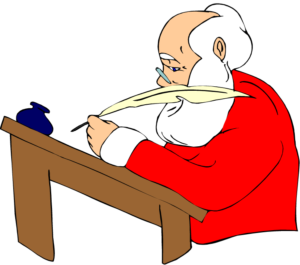 developed exclusively for USPS Operation Santa letter adopters, powered by Toys“R”Us, just in time for the start of the program’s first day of letter adoption.
developed exclusively for USPS Operation Santa letter adopters, powered by Toys“R”Us, just in time for the start of the program’s first day of letter adoption.
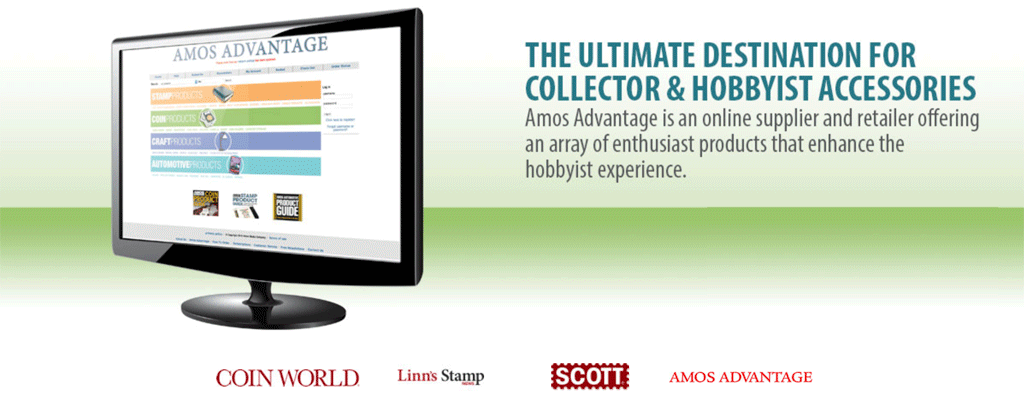
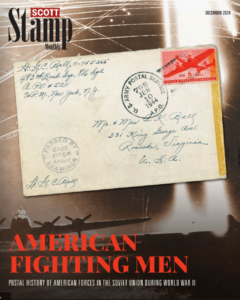
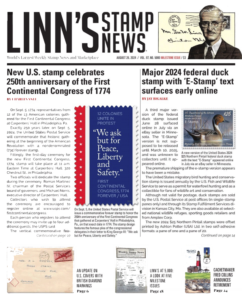

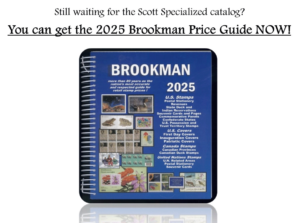
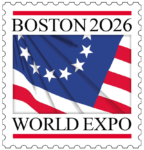
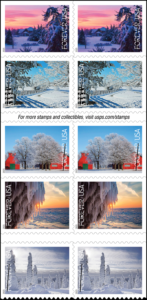
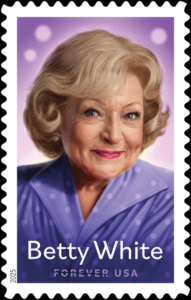
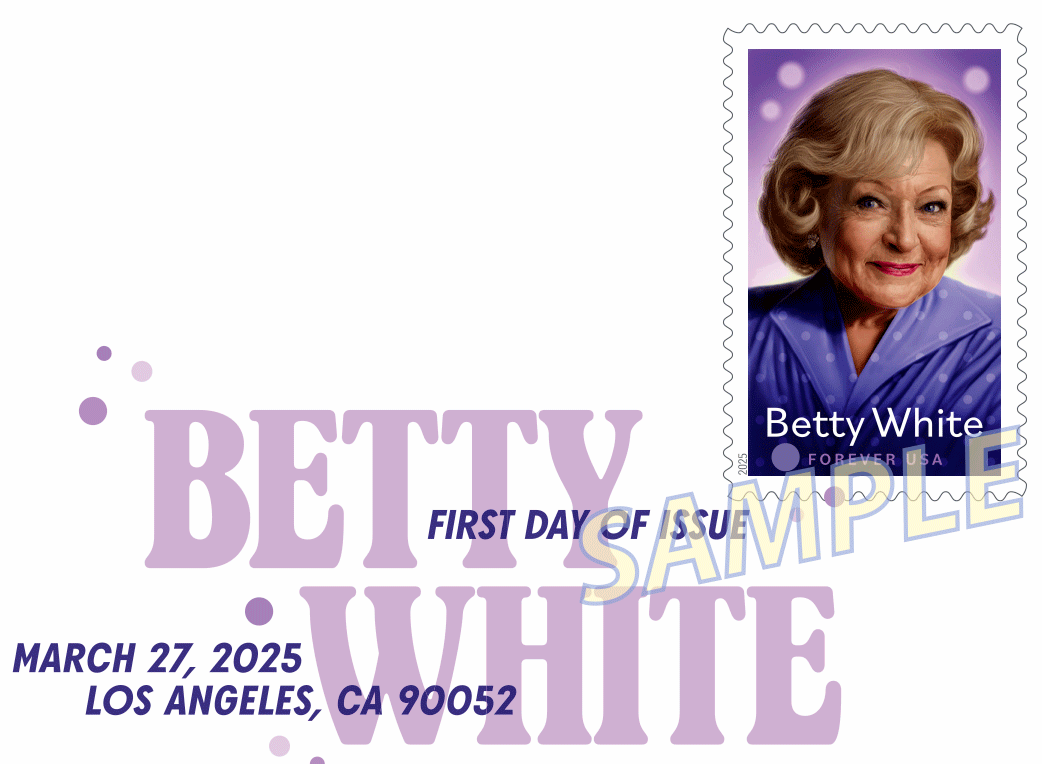
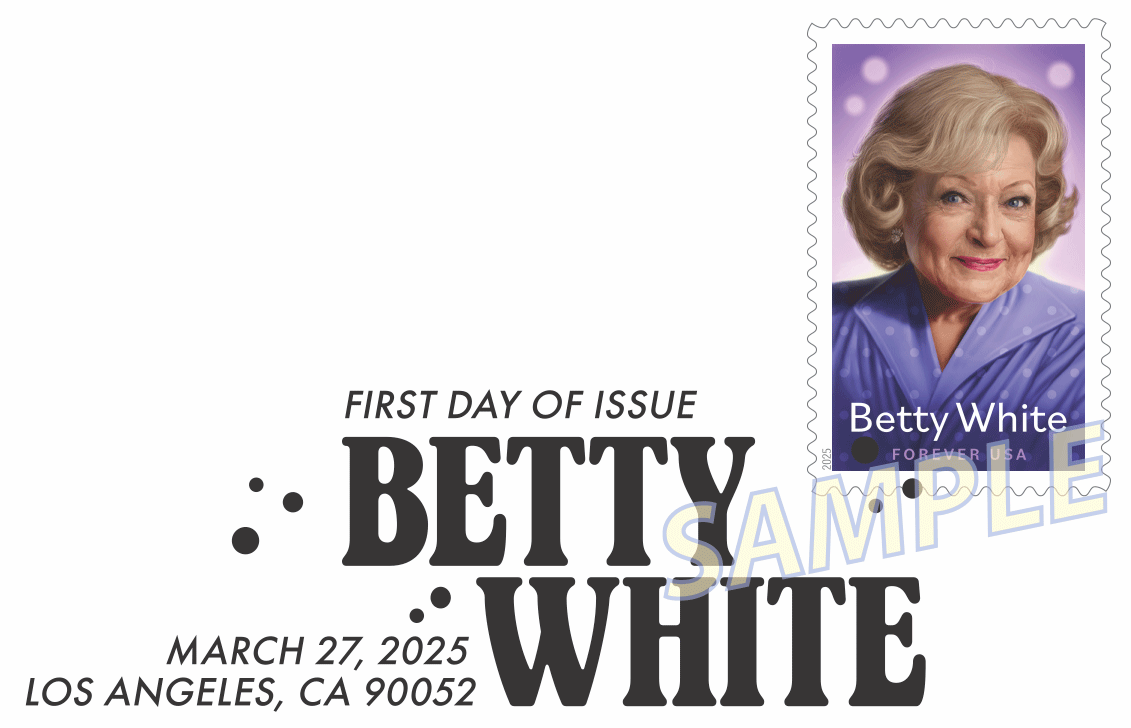
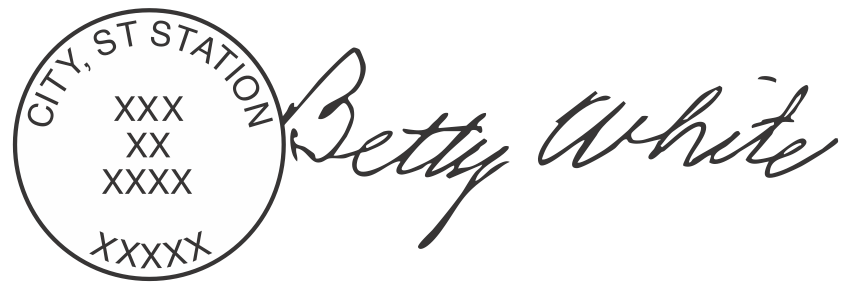 The “special” postmark measures 2.75″ x 0.91″
The “special” postmark measures 2.75″ x 0.91″
